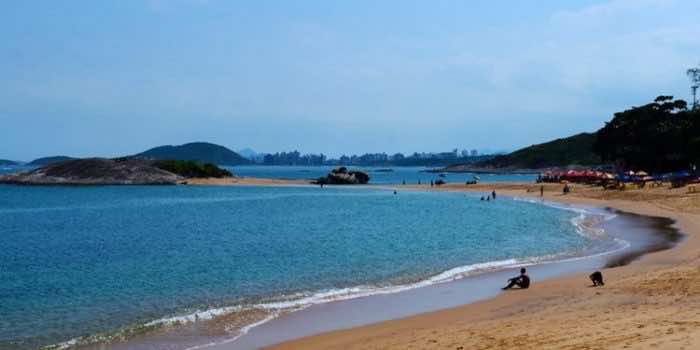The Areia Preta beach in the Brazilian city of Guarapari is famous for its black sand. It has external radiation levels of almost 400 times the normal background radiation recorded in the US.
The black sand here comprises moderate quantities of monazite, a phosphate mineral-rich in uranium and thorium. Research has shown that background radiation on Areia Preta can reach 175 mSv per year, or 20 ?Sv/h, while some spots, particularly those with lots of black sand, have radiation levels of up to 55 ?Sv/h. To put that into perspective, the average radiation exposure level across the United States is about 0.34 ?Sv/h, while an X-ray gives people a one-time exposure to about 100 ?Sv.
The beach became famous in the late 20th century and monazite sand beaches became a health tourism attraction.
In 1972, the radioactivity of monazite sand was already known for almost a century, but that year physician Silva Mello started promoting a radioactive sand therapy that she claimed could treat a variety of health problems, including rheumatism. To this day, thousands of tourists try to cure diseases by lying on or even covering themselves with this radioactive sand, ignoring the danger of prolonged exposure to radiation.
Owing to this the city is nicknamed “The Healthy Town” with pride, despite the controversy surrounding the effects of exposure to the sand.
The radiation levels stay up because the sea waves continuously pound coastal mountains rich in monazite, and some of the radioactive compounds wash up on the shore in the form of black sand.

One 2002 study found that gamma radiation doses on Areia Preta beach were comparable to those in the immediate vicinity (l km) of the Chernobyl nuclear power plant. The authors point out that while the radionuclide composition in the two locations is undoubtedly different, the gamma radiation on Areia Preta requires protective equipment.
Radiation absorbed through the skin can reportedly increase the risk of skin cancer, while inhaled radioactive compounds can cause lung cancer. It is for these reasons that the Brazilian Nuclear Agency does not recommend spending too much time on radioactive beaches like Areia Preta.


